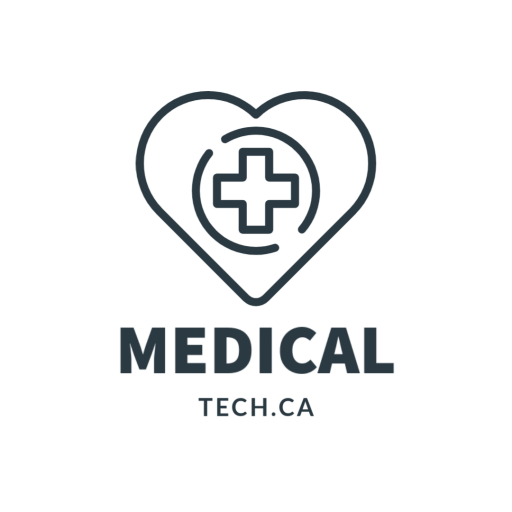
by medicaltechont | Mar 8, 2015 | Canada, United States
Technology entrepreneur Jonathan Bush says he was recently watching a patient move from a hospital to a nursing home. The patient’s information was in an electronic medical record, or EMR. And getting the patient’s records from the hospital to the nursing home, Bush says, wasn’t exactly drag and drop.
“These two guys then type — I kid you not — the printout from the brand new EMR into their EMR, so that their fax server can fax it to the bloody nursing home,” Bush says.
In an era when most industries easily share big, complicated, digital files, health care still leans hard on paper printouts and fax machines. The American taxpayer has funded the installation of electronic records systems in hospitals and doctors’ offices — to the tune of $30 billion since 2009. While those systems are supposed to make health care better and more efficient, most of them can’t talk to each other.
Bush lays a lot of blame for that at the feet of this federal financing.
“I called it the ‘Cash for Clunkers’ bill,” he says. “It gave $30 billion to buy the very pre-internet systems that all of the doctors and hospitals had already looked at and rejected,” he says. “And the vendors of those systems were about to die. And then they got put on life support by this bill that pays you billions of dollars, and didn’t get you any coordination of information!”
Click here to read more

by medicaltechont | Feb 15, 2015 | Canada, Ontario
As a health care provider, your role in knowing the risks factors and getting people on the right track before they get type 2 diabetes and supporting those who have either type 1 or type 2 diabetes, is crucial to the health of Ontarians.
Along with the help of the Diabetes Education Programs, the Centres for Complex Diabetes Care, and other service providers in the community, it’s possible to win the fight against diabetes!
In this section, you will find information about the diabetes care reports, as well as various tools that you can use to counsel those people that may be at risk of developing diabetes or are living with either type 1 or type 2 diabetes.
Read more

by medicaltechont | Feb 14, 2015 | Canada, Dubai, World
Canadian Specialist Hospital (CSH), one of the leading private sector hospitals in the UAE, has won the topmost rating from Dubai Health Authority (DHA) for progress made in electronic documentation in line with international best practices in integrating information technology for improved patient care.
The DHA evaluation of the level of electronic documentation of medical records in hospitals was based on the internationally accepted Electronic Medical Record Adoption Model (EMRAM). The evaluation process also coincides with Dubai’s ‘Smart City’ initiative, aimed to transform the city into one of the smartest in the world by providing seamless access to various services and utilities across high speed wireless internet.
Electronic Medical Records (EMR) enable hospitals and clinicians to maintain and track data over digital devices to identify and monitor patients for preventive visits, screening and timely intervention. With the paperless system, authorised persons can update data using the Hospital Management System (HIS) anywhere in the hospital so that for doctors, nurses and care-givers have quick and easy access to real-time patient information.
Read more

by medicaltechont | Feb 14, 2015 | Canada, e-Health, EHR, OHIP Billing, Ontario MD, Vendors
Purchasing electronic health record (EHR) systems is a process in which potential buyers and users often seek and assess information about the products in question and compare alternatives. EHR is often a new technology to the people who use it, introducing new ways of performing clinical and administrative tasks. As such, it may be regarded as an innovation. Rogers’ [] diffusion of innovations theory suggests that the process of adopting innovations (the innovation decision process) typically follows five stages: knowledge, persuasion, decision, implementation, and confirmation. Most relevant to this work is the knowledge stage in which adopters learn about the existence of an innovation (awareness knowledge), gain basic knowledge of how to use it (how-to knowledge), and understand the underlying principles behind it (principles knowledge). This is followed by the persuasion stage, in which potential adopters actively seek more information about the innovation, evaluate its characteristics, form positive or negative attitudes toward it, and subsequently adopt (eg, purchase) or reject the innovation at the decision stage.
For EHRs, the adoption decision process involves a planning phase that includes needs assessment, identifying champions, gaining buy-in from stakeholders, workflow analysis, understanding financial issues, and goal setting [,]. This is followed by a system selection phase in which information is sought from various sources including vendors and general consultants[], visits to practices that have installed systems of interest, and product demonstrations [,]. At this stage, according to Lorenzi et al [], “the internet provides a valuable source of information regarding specific EHR system products, capabilities, and the selection process” (p.8). In particular, vendor websites could play an important role in making an adoption decision by creating awareness, providing how-to and principle knowledge, and using various persuasive means to affect potential adopters’ perceptions of EHRs. However, to the best of our knowledge, no systematic efforts have been made to examine whether EHR vendors use their websites to present the information typically gathered in the pre-decision stages of Rogers’ innovation-decision process.
Read more

by medicaltechont | Feb 7, 2015 | Canada
Life University is currently working with AlignLife to increase the number of doctors participating in the practice-based research network and also begin exploring daily visit data, insurance claims data and outcomes.
Each year the Association of Chiropractic Colleges hosts a Research Agenda Conference. This year’s conference will be hosted March 19 to 21 at Planet Hollywood in Las Vegas and AlignLife is pleased to announce there will be a segment on the first paper submitted by Health Missions.
Health Missions is a non-profit organization that AlignLife clinics nationwide contribute to. AlignLife is working with the Life team to increase the number of doctors participating in the practice-based research network and begin exploring daily visit data, insurance claims data and outcomes. This project will be continually evolving with research to validate the power of chiropractic.
The common concern about chiropractic research is the study group size, which is normally too small to provide validation of outcomes. AlignLife encourages all chiropractors to join them in the fight to prove, protect and provide natural health care. Interested parties should visit http://www.chirocolleges.org/accrac/schedule.html.
– See more at: http://www.canadianchiropractor.ca/collaboration/technology-aims-to-develop-large-scale-research-network-on-chiropractic-natural-health-care-4055#sthash.KEtpa1oh.dpuf
by medicaltechont | Feb 7, 2015 | Canada, Healthcare, Hospitals, private clinics
The Supreme Court of Canada decision Friday to allow people with “grievous and irremediable medical conditions” to ask for doctor-assisted suicide should be just the start of a national conversation about end-of-life care in the country, doctors say.
“The Supreme Court has lit a fire under us,” Dr. James Downar, Co-Chair of the Physicians Advisory Council for Dying with Dignity, said in an interview.
“It’s time to talk, we can’t put it off any more.”
http://www.cbc.ca/m/news/health/doctor-assisted-death-physicians-want-more-palliative-care-as-well-1.2948265





